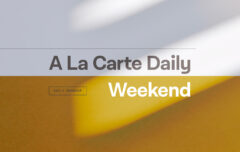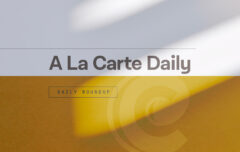It has been fascinating to witness the rise of Halloween in recent years. What was at one time a day for kids to spend a couple of hours going door-to-door to collect candy and coins has morphed into a true holiday where kids and adults alike celebrate. Recent trips to costume stores show that the shelf space given to adult costumes now outweighs the space given to children’s costumes. I actually wonder if the trajectory of the holiday is such that the children will soon be forgotten altogether.
It’s fascinating to me–and more than a little repulsive–that on Halloween you can walk into a legitimate, professional workplace–a bank or real estate office where millions of dollars change hands every day–and find women dressed in ill-fitting, sexy costumes. You can find men dressed like skeletons or superheroes. Just for one day we can all act in ways that any other days would get us fired (or institutionalized).
I’ve often wondered why it is that Halloween has transformed from what it was to what it is today. Along the way I’ve developed a theory. It may seem a little far-fetched, but hear me out and let me know what you think. First I’ll give two background factors or forces, and then get to the heart of my theory.
There is no doubt that, culturally, we are in a time of immaturity. There is little expectation of maturity for children and adults alike. As I’ve written in books and often shared at conferences, many people seem trapped in perpetual adolescence. Once thought to last for only a year or two, many people now believe that adolescence–that time that falls between childhood and adulthood–should now last for decades. There are some out there who honestly believe that you cannot rightly be considered an adult until your mid-thirties. It is a disturbing trend and I think it plays into the obsession with Halloween. Immaturity and dressing in costumes seems to go hand-in-hand. That is not strictly true, but certainly playing dress-up has more to do with childhood than mature adulthood. I’m not saying that you have to be immature to dress up for Halloween; but it helps.
So there is one cultural force that lies behind my theory.
A second cultural force is the sheer sexuality around us. When you visit those costume shops you will no doubt find that the majority of costumes for women are meant to be alluring. You can be a naughty witch or a naughty nurse or a naughty enchantress and on and on and on. There are alternatives, of course, but many of the costumes are overtly sexual. Sadly, the little girl costumes are not a whole lot better with many of them tending toward the sexy, even for pre-schoolers.
That gives us two cultural forces–immaturity and sexuality.
Let me give one more and then I’ll attempt to pull it all together. The third force is loneliness and lack of community. We live in an interesting and unique time in which increasing numbers of people are finding their most significant relationships and even their most significant community–their identity–in places other than the real, local world. What this means is that even though I live in close proximity to hundreds of people, I do not really know them or identify with them. Instead, I am first and foremost a member of some online community and prefer to communicate via the Internet instead of communicating with the people next door. My most significant sense of being, of identity, is not local but online.
What Halloween offers is the one day in the year where I actually communicate with my neighbors and where there seems to be a sense of community. This is the one day in the year where I can go and knock on my neighbor’s door and find that he will do something good for me. At the same time, he will knock on my door and I will do him some good. This calls us back to something we know existed at one time–a sense of local community. We may never have experienced this kind of thing, but in the background of our cultural memory, we know it is there. We know there was a time when we truly related to the people around us and Halloween triggers that memory, that memory of something we just vaguely remember and somehow still long for.
The immaturity plays into it because it extends Halloween from the home to the workplace and allows us to legitimize playing along, even as adults. The sexuality plays into it because it legitimizes those who long to be seen and noticed and admired; it gets a whole different crowd playing along. But my theory is this: at heart, the rise of Halloween is about longing for community.










